The Berlin Stories  Down There on a Visit: A Novel 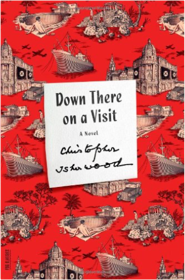 Published in 1962, Down There on a Visit is based on material from a proposed epic that would also have incorporated The Berlin Stories. It is now widely regarded as the most accomplished of Isherwood's novels. Kathleen and Frank: The Autobiography of a Family 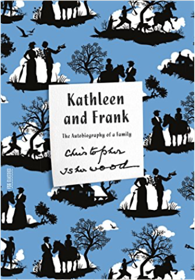 It is the story of Christopher Isherwood’s parents, the winsome and lively daughter of a successful wine merchant and the reticent, artistically gifted soldier-son of a country squire. They met in 1895 outside a music rehearsal in an army camp and married in 1903 after Christopher’s father returned from the Boer War. Frank was killed in an assault near Ypres in 1915; Kathleen remained a widow for the rest of her life. Their story is told through letters and Kathleen’s diary, with connecting commentary by Isherwood. Kathleen and Frank is a family memoir, but it is also a richly detailed social history of a period of striking change― Queen Victoria’s funeral, Blériot’s flight across the English Channel, Sarah Bernhardt’s Hamlet, suffragettes, rising hemlines, the beginning of the Troubles in Ireland―the period that shaped Isherwood himself. As a young man, Isherwood fled the tragedy that engulfed his parents’ lives and threatened his own; in Kathleen and Frank, he reweaves the tapestry of family and heritage and places himself in the pattern. Lions and Shadows: An Education in the Twenties 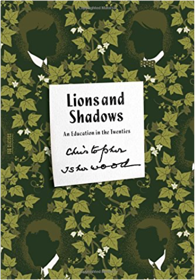 Although the story is Isherwood’s own life story, carrying him up to the age of twenty-five, he gives free rein to his remarkable powers of dramatization, improving on the facts here and there, to make a highly entertaining, sometimes hilarious book. “Read it as a novel,” says Isherwood. There is no difficulty taking his advice. But his characters were real people, and when Lions and Shadows was first published, in 1938, it transformed their lives into legend. A Meeting by the River: A Novel 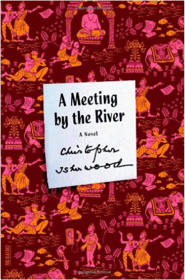 After a long separation, two English brothers meet in India. Oliver, the idealistic younger brother, prepares to take his final vows as a Hindu monk. Patrick, a successful publisher with a wife and children in London and a male lover in California, has publicly admired his brother's convictions while privately criticizing his choices. First published in 1967, A Meeting by the River delicately depicts the complexity of sibling relationships―the resentment and competitiveness as well as the love and respect. Ultimately, the brothers' exposure to each other's differences deepens their awareness of themselves. In A Meeting by the River, Christopher Isherwood dramatizes the conflict between sexuality and spirituality that inspired his late writings. Prater Violet: A Novel 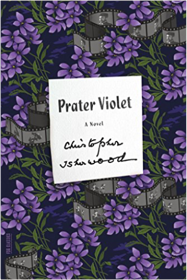 Originally published in 1945, Christopher Isherwood's "Prater Violet" is a stingingly satirical novel about the film industry. It centers around the production of the vacuous fictional melodrama "Prater Violet," set in nineteenth-century Vienna, providing an ironic counterpoint to tragic events as Hitler annexes the real Vienna of the 1930s. The novel features vivid portraits of the imperious, passionate, and witty Austrian director Friedrich Bergmann and his disciple, a genial young screenwriter the fictionalized Christopher Isherwood." A Single Man 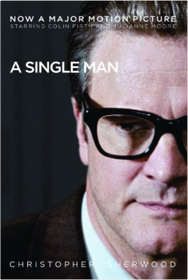 The author's favorite of his own novels, now back in print! When A Single Man was originally published, it shocked many by its frank, sympathetic, and moving portrayal of a gay man in midlife. George, the protagonist, is adjusting to life on his own after the sudden death of his partner, and determines to persist in the routines of his daily life; the course of A Single Man spans twenty-four hours in an ordinary day. An Englishman and a professor living in suburban Southern California, he is an outsider in every way, and his internal reflections and interactions with others reveal a man who loves being alive despite everyday injustices and loneliness. Wry, suddenly manic, constantly funny, surprisingly sad, this novel catches the texture of life itself. "A testimony to Isherwood's undiminished brilliance as a novelist." Anthony Burgess "An absolutely devastating, unnerving, brilliant book." Stephen Spender "Just as his Prater Violet is the best novel I know about the movies, Isherwood's A Single Man, published in 1964, is one of the first and best novels of the modern gay liberation movement." Edmund White The Sixties: Diaries:1960-1969 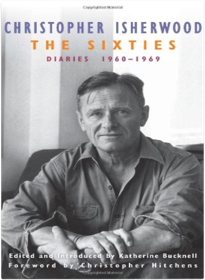 The diaries are crammed with wicked gossip and probing psychological insights about the cultural icons of the time—Francis Bacon, Richard Burton, Leslie Caron, Marianne Faithfull, David Hockney, Mick Jagger, Hope Lange, W. Somerset Maugham, John Osborne, Vanessa Redgrave, Tony Richardson, David O. Selznick, Igor Stravinsky, Gore Vidal, and many others. But the diaries are most revealing about Isherwood himself—his fiction (including A Single Man and Down There on a Visit), his film writing, his college teaching, and his affairs of the heart. He moves easily from Beckett to Brando, from arthritis to aggression, from Tennessee Williams to foot powder, from the opening of Cabaret on Broadway (which he skipped) to a close analysis of Gide. In the background run references to the political and historical events of the period: the anxieties of the Cold War, Yuri Gagarin's spaceflight, de Gaulle and Algeria, the eruption of violence in America's inner cities, the Vietnam War, the Summer of Love, the moon landing, and the raising and lowering of hemlines. Isherwood is well known for his prophetic portraits of a morally bankrupt Europe on the eve of World War II; in this unparalleled chronicle, The Sixties, he turns his fearless eye on the decade that more than any other has shaped the way we live now. The World in the Evening: A Novel 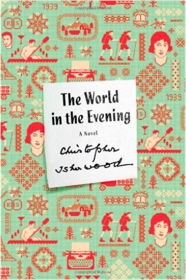 Against the backdrop of World War II, The World in the Evening charts the emotional development of Stephen Monk, an aimless Englishman living in California. After his second marriage suddenly ends, Stephen finds himself living with a relative in a small Pennsylvania Quaker town, haunted by memories of his prewar affair with a younger man during a visit to the Canary Islands. The world traveler comes to a gradual understanding of himself and of his newly adopted homeland. When first published in 1953, The World in the Evening was notable for its clear-eyed depiction of European and American mores, sexuality, and religion. Today, readers herald Christopher Isherwood's frank portrayal of bisexuality and his early appreciation of low and high camp. |


Delicious Library
Collection Total:
3,640 Items
3,640 Items
Last Updated:
Nov 2, 2025
Nov 2, 2025
 Made with Delicious Library
Made with Delicious Library